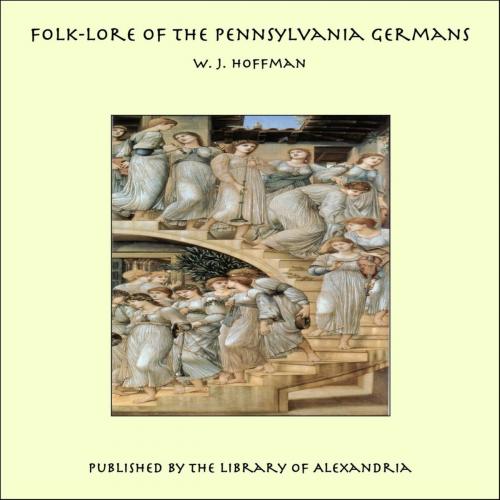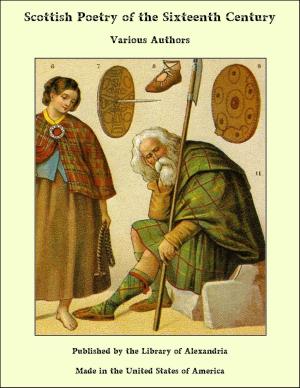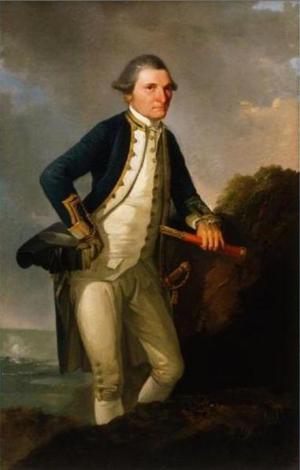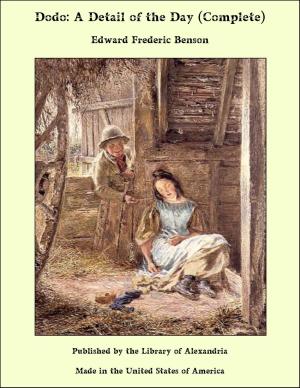Folk-Lore of The Pennsylvania Germans
Nonfiction, Religion & Spirituality, New Age, History, Fiction & Literature| Author: | W. J. Hoffman | ISBN: | 9781465546487 |
| Publisher: | Library of Alexandria | Publication: | March 8, 2015 |
| Imprint: | Language: | English |
| Author: | W. J. Hoffman |
| ISBN: | 9781465546487 |
| Publisher: | Library of Alexandria |
| Publication: | March 8, 2015 |
| Imprint: | |
| Language: | English |
Journal of American Folk-Lore 1:2 pp. 125-35 [1888] Swedish settlers appeared at Tinicum Island, on the Delaware River, about the year 1638, where they held possession until 1655, when they were displaced by the Dutch, who in turn (in 1664) were compelled to give way to the English. A few adventurers had already arrived and established themselves where Chester now stands, a year before the arrival of Penn in 1682. Previous to this, numbers of Germans from the Palatinate--Rhenish Bavaria--had been induced to come to England upon the invitation of Queen Anne, the object of the English authorities being the rapid colonization of the new possessions in America; therefore many of the immigrants who came with Penn, and during the following years, were retained for a greater or less period of time to indemnify that government for the expense of transportation and maintenance. Some sold themselves to settlers from the interior, for whom they worked for a specified time. Numbers of these German colonists were transported to Georgia and to New York, but most of them ultimately made their way to Pennsylvania, where their friends had previously settled. During the years 1683 and 1684 the immigration steadily increased, and was represented chiefly by Welsh, English, a few Dutch, and, above all, by Palatines. According to Proud, some of these lodged in the woods, in hollow trees, and in caves and dug-outs made along the banks of the Delaware and the Wissahickon, while others hastily erected rude huts. Thousands of new arrivals flocked in between the years 1708 and 1720, these being chiefly Palatines, with a few natives of Würtemberg and Darmstadt. Franconia, Baden, and Saxony were also represented at various intervals. Irish, from the north of Ireland, began to arrive about the year 1719, and the Welsh had been among the first to purchase land of Penn, selecting that on the west bank of the Schuylkill. Previous to 1692, the latter settled six townships in Chester County. The Irish, on the contrary, established themselves on the Lehigh, at a point between the present sites of Bethlehem and Allentown, which was long known as "Craig's Settlement." North of the Blue Mountains, near the Delaware, a few Dutch families from New Jersey and New York took up land, as did also a number of French and Spanish
Journal of American Folk-Lore 1:2 pp. 125-35 [1888] Swedish settlers appeared at Tinicum Island, on the Delaware River, about the year 1638, where they held possession until 1655, when they were displaced by the Dutch, who in turn (in 1664) were compelled to give way to the English. A few adventurers had already arrived and established themselves where Chester now stands, a year before the arrival of Penn in 1682. Previous to this, numbers of Germans from the Palatinate--Rhenish Bavaria--had been induced to come to England upon the invitation of Queen Anne, the object of the English authorities being the rapid colonization of the new possessions in America; therefore many of the immigrants who came with Penn, and during the following years, were retained for a greater or less period of time to indemnify that government for the expense of transportation and maintenance. Some sold themselves to settlers from the interior, for whom they worked for a specified time. Numbers of these German colonists were transported to Georgia and to New York, but most of them ultimately made their way to Pennsylvania, where their friends had previously settled. During the years 1683 and 1684 the immigration steadily increased, and was represented chiefly by Welsh, English, a few Dutch, and, above all, by Palatines. According to Proud, some of these lodged in the woods, in hollow trees, and in caves and dug-outs made along the banks of the Delaware and the Wissahickon, while others hastily erected rude huts. Thousands of new arrivals flocked in between the years 1708 and 1720, these being chiefly Palatines, with a few natives of Würtemberg and Darmstadt. Franconia, Baden, and Saxony were also represented at various intervals. Irish, from the north of Ireland, began to arrive about the year 1719, and the Welsh had been among the first to purchase land of Penn, selecting that on the west bank of the Schuylkill. Previous to 1692, the latter settled six townships in Chester County. The Irish, on the contrary, established themselves on the Lehigh, at a point between the present sites of Bethlehem and Allentown, which was long known as "Craig's Settlement." North of the Blue Mountains, near the Delaware, a few Dutch families from New Jersey and New York took up land, as did also a number of French and Spanish















